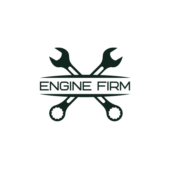In fleet management, compliance with the Department of Transportation (DOT) regulations is not just a requirement—it’s a vital factor that impacts safety, efficiency, and financial health.
Fleet managers face numerous challenges in ensuring their drivers and vehicles comply with DOT regulations, including Hours of Service (HOS) laws, vehicle inspections, and driver qualifications. Failing to meet these regulations can result in significant penalties, safety issues, and increased operational costs.
One effective way to streamline this complex process is through DOT driver compliance software. This specialized software simplifies the management of DOT regulations by automating the required processes ensuring that fleet managers are always up-to-date with regulatory changes and compliant.
In this article, we’ll explore the key reasons why DOT compliance software is a game-changer for fleet management and how it can help businesses stay ahead of the curve.
What Is Dot Driver Compliance Software?
DOT driver compliance software refers to a suite of digital tools designed to help fleet managers adhere to the rules set by the Department of Transportation (DOT). These regulations cover a wide range of requirements, from tracking the number of hours drivers can be on the road to ensuring vehicles are properly maintained and safe for operation. The main purpose of the software is to automate the compliance process, reducing human error and simplifying the complex task of monitoring and documenting compliance data.
Why Dot Compliance Software Is Essential For Fleet Management
1. Enhanced Safety and Reduced Risk of Accidents
Safety is always a top priority in the transportation industry. DOT driver compliance software plays a pivotal role in improving safety by helping fleet managers ensure their drivers are adhering to crucial regulations such as HOS and vehicle inspections.

By automatically tracking driver hours, the software prevents fatigue-related accidents, which are a leading cause of road incidents in the trucking industry. Additionally, the software can flag any driver violations in real-time, allowing managers to take immediate corrective action, whether it’s enforcing rest periods or providing additional training.
2. Avoiding Costly Fines and Penalties
Fleet managers are well aware of the potential financial repercussions of failing to comply with DOT regulations. Violations related to HOS, vehicle maintenance, and driver certifications can lead to hefty fines and, in some cases, the suspension of a company’s operating authority. DOT compliance software significantly reduces the risk of non-compliance by automating many of the tasks related to tracking and reporting, ensuring that fleet operations are always in line with regulatory requirements.
This software eliminates the need for manual record-keeping and reduces human error, ensuring that reports are accurate and that all compliance records are readily available during inspections or audits. By keeping track of driver hours, inspection schedules, and vehicle maintenance automatically, the software helps you avoid fines and maintain a clean compliance record.
3. Streamlining Operations and Increasing Efficiency
Compliance software also improves operational efficiency by reducing the time fleet managers and drivers spend on administrative tasks. With automated features like log tracking, inspection management, and real-time alerts, fleet managers can focus on more strategic aspects of fleet management, such as improving route planning, optimizing fuel consumption, and enhancing driver performance.
Key Features Of Dot Driver Compliance Software
To fully understand the value of DOT driver compliance software, it’s important to explore the core features that make it effective for fleet management. Here are some key features of this software that help fleet managers achieve compliance and improve overall operations:
1. Electronic Logging Device (ELD) Integration
The integration of ELDs with DOT compliance software is one of the most important features. ELDs automatically track and record driver hours, ensuring compliance with HOS regulations. They eliminate the need for manual logbooks, reducing the chances of human error and making it easier for fleet managers to monitor driver compliance.
2. Real-Time Monitoring and Alerts
Real-time monitoring is a powerful tool for fleet managers. The software tracks driver behavior, vehicle status, and compliance in real-time, providing immediate alerts when violations are detected. Whether a driver is approaching their maximum allowable driving time or a vehicle is due for maintenance, fleet managers receive notifications, allowing them to take action before problems arise.
3. Maintenance and Inspection Tracking
With DOT compliance software, fleet managers can track vehicle inspections, maintenance schedules, and repair histories. This feature ensures that vehicles are always in optimal condition and meet the required safety standards. The software automatically alerts managers when inspections or maintenance are due, preventing downtime and ensuring the safety of the fleet.
4. Ensuring Vehicle Reliability with Commercial Fleet Repair
In addition to tracking driver compliance, maintaining your fleet’s vehicles is essential for overall safety and regulatory adherence. Working with a reliable Commercial Fleet Repair provider ensures that trucks, trailers, and support vehicles are properly inspected, serviced, and repaired according to DOT standards. Routine maintenance and timely repairs help prevent breakdowns, reduce the risk of safety incidents, and keep your fleet fully compliant with regulations. By combining fleet repair services with DOT compliance software, fleet managers can create a comprehensive system that monitors driver behavior, schedules maintenance, and guarantees that every vehicle on the road meets the highest safety and operational standards. This integrated approach not only protects your drivers and assets but also strengthens overall fleet performance and compliance.
5. Comprehensive Reporting and Audit Tools
DOT compliance software generates detailed, accurate reports that are essential for audits and inspections. Fleet managers can quickly access driver logs, maintenance records, and compliance status reports, making it easier to stay prepared for DOT audits. These reports are often customizable, so managers can tailor them to meet specific requirements or focus on certain aspects of compliance.
6. Driver Management and Certification Tracking
The software helps keep track of each driver’s certification and training status. It ensures that drivers have the necessary qualifications to operate their vehicles and that they complete any required training or certifications. This feature helps prevent legal issues and ensures that only qualified drivers are on the road.
How DOT Driver Compliance Software Helps Prevent Common Fleet Management Mistakes
1. Preventing Hours of Service Violations
Hours of Service (HOS) violations are one of the most common regulatory issues faced by fleet managers. DOT compliance software helps prevent these violations by automatically tracking driver hours, rest periods, and mileage.

The software can send alerts when drivers are approaching their maximum allowed driving time, ensuring that they take the necessary breaks to avoid fatigue. This not only helps prevent accidents but also ensures that the company remains compliant with DOT regulations.
2. Accurate Vehicle Maintenance Records
Maintaining accurate vehicle inspection and maintenance records is crucial for ensuring safety and preventing costly fines. DOT compliance software makes it easy to schedule inspections, track maintenance tasks, and store records digitally. This eliminates the risk of missing inspections or failing to document important maintenance activities, keeping the fleet in good working order and minimizing the risk of breakdowns.
3. Reducing Human Error in Documentation
Manual record-keeping is prone to human error, which can lead to discrepancies and compliance violations. DOT driver compliance software automates the documentation process, ensuring that all records are accurate and up-to-date. This not only reduces the risk of mistakes but also makes it easier for fleet managers to access and review records quickly during inspections or audits.
4. Staying Compliant with Changing Regulations
DOT regulations are constantly evolving, and keeping up with these changes can be a challenge. DOT compliance software is designed to stay updated with the latest regulatory requirements, ensuring that your fleet is always compliant with the newest laws. This feature helps prevent fines for non-compliance and ensures that your fleet is always operating within legal guidelines.
Conclusion
In today’s highly regulated transportation industry, DOT driver compliance software is not just a luxury—it’s a necessity. It helps ensure that fleets remain compliant with DOT regulations, reduces the risk of costly fines, and enhances overall operational efficiency. By automating key compliance tasks, fleet managers can focus on more strategic activities like improving safety, reducing costs, and optimizing fleet performance.
From tracking driver hours and vehicle inspections to generating accurate reports and staying up-to-date with changing regulations, DOT compliance software simplifies the complexities of fleet management. For companies looking to enhance their compliance processes, streamline operations, and improve safety, investing in DOT driver compliance software is a wise decision.

